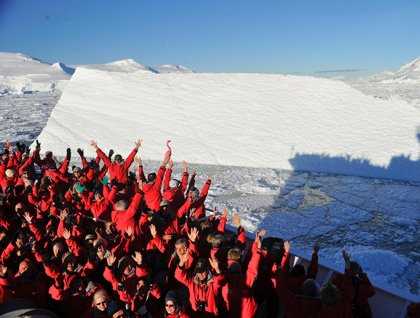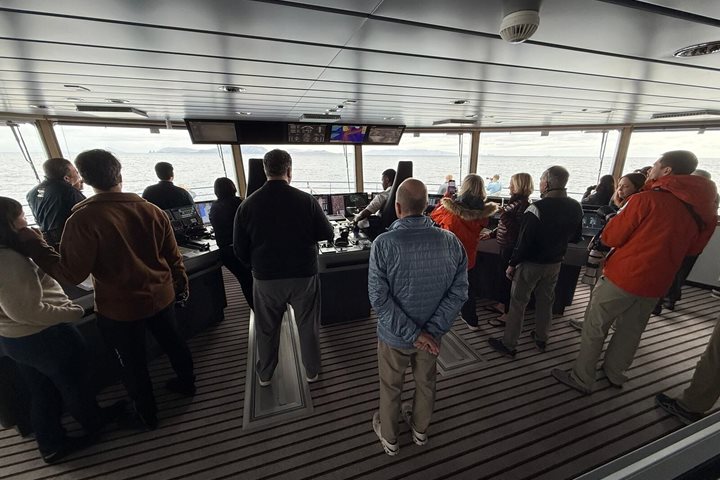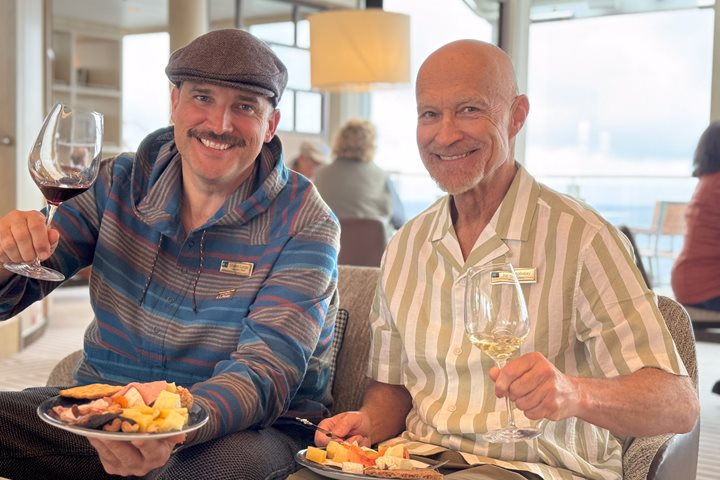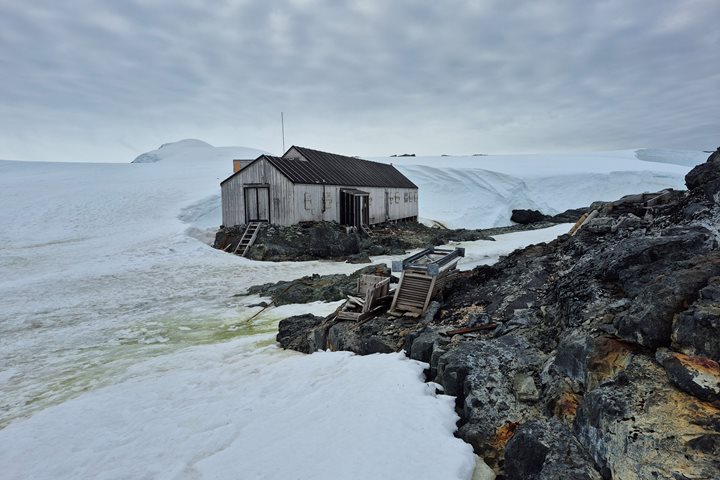This morning we woke up to steel-gray overcast skies as we sailed into Port Lockroy, a beautiful and quiet anchorage dotted with gentoo penguin colonies and the mountains of Wiencke Island in the background. The natural harbor frequented by whalers was also the location of the British scientific “Base A,” established in 1944 used as part of a secret wartime effort to monitor German shipping movements for operation Tabarin. After the war the base was used as a proper British scientific research station until 1962. The base was recognized for its historical importance and designated as “Historic Site and Monument No 61” under the Antarctic Treaty and completely renovated and turned into a museum and post office in 1996.
Our landing site was iced-in and Lisa Kelley, our expedition leader, spent the entire morning waist-deep in the freezing cold water clearing brash ice away as the Zodiacs and naturalists brought guests in to visit the island’s gentoo penguin colony. Guests also toured the museum, and made purchases at the Port Lockroy gift shop, which every season continues to expand their line of Antarctic souvenirs, like hats, pins, patches, and t-shirts. Christmas decorations had been hung throughout in celebration of the upcoming holidays. Three women reside at the station during the Antarctic summer season and manage the shop and take care of mailing our guests’ postcards to their friends and families back home. Proceeds for the small shop fund the upkeep of the site and other historic monuments in Antarctica. The post office at Port Lockroy, on behalf of the Government of the British Antarctic Territory, sends over 70,000 letters and postcards to over 100 countries each season. They say that mail takes nearly 2-6 weeks to arrive. On another part of the island, the Trust collects data for the British Antarctic Survey to observe the effects of tourism on the gentoo penguin population, and is closed to the public.
After lunch we heard from our Global Perspective speaker, Kathy Moran. Kathy is the senior editor of natural history at National Geographic Magazine. She shared her story about the Serengeti lion that she produced together with National Geographic photographer Nick Nichols.
Sailing north in the Gerlache Strait, we turned left into Dallmann Bay and spotted three humpback whales feeding between the brash ice. They were a spectacular sight in the fresh nippy breeze under sunny clear skies.
Towards dinner we sailed deeper into the ice of Lapeyrere Bay, parked the ship while we ate our final dinner in the Antarctic Peninsula before starting our sail north towards Ushuaia, Argentina. Lisa called for all guests to come on the bow, dressed in their red parkas, for a final group photo in front of the glacier ice. The captain sailed the ship in such a way as to cast a shadow of the ship’s profiles along the side of an iceberg. This was a spectacular way to say our final farewell and end our remarkable journey to the White Continent.







